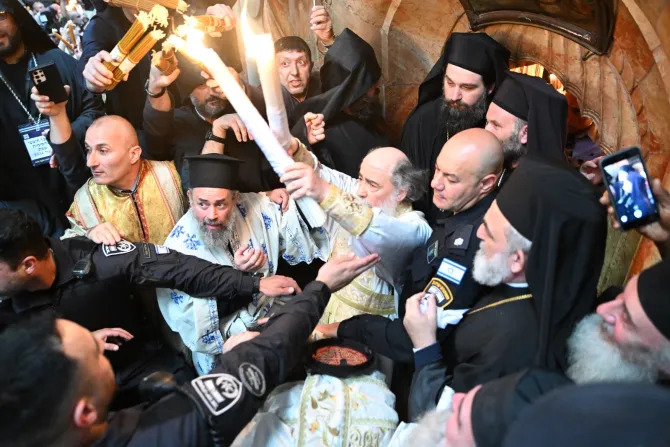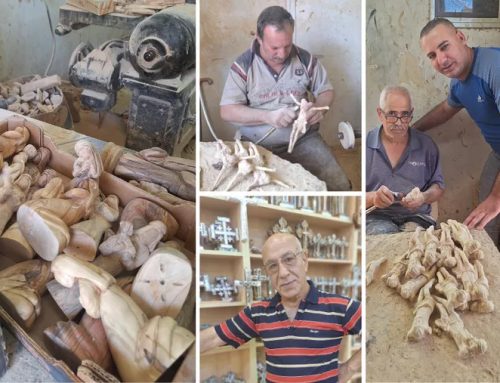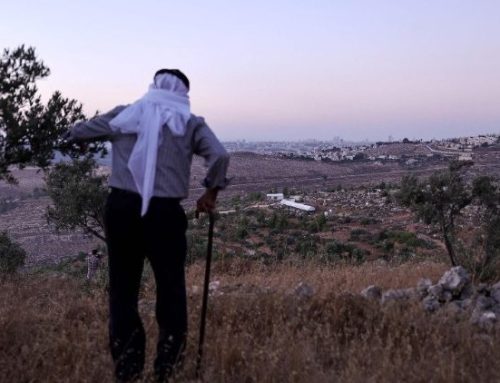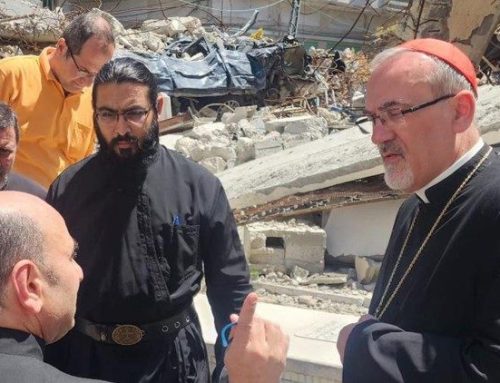Pilgrims gathered in Jerusalem on Saturday for the annual “Holy Fire” ceremony at the revered site of Jesus’ burial and resurrection, an ancient custom considered by many believers to be a miraculous event that takes place the day before the Orthodox Christian celebration of Easter.
For safety reasons, attendance at the May 4 event was capped at 4,200 people inside the Basilica of the Holy Sepulcher, though the crowds were more manageable and somewhat subdued this year because of a lack of pilgrims from the Palestinian territories and abroad due to the ongoing Israel-Hamas war.
Access to the Old City where the basilica is located was restricted beginning on Friday night amid a heavy police presence. Numerous medical personnel and firefighters were present inside the basilica.
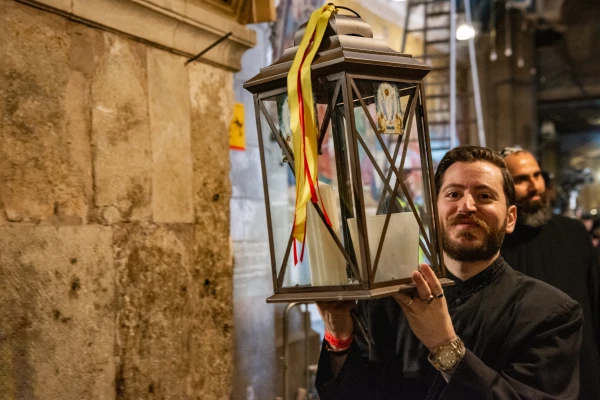
Though its authenticity is disputed by some, the “Holy Fire” or “Holy Light” refers to a fire of purported divine origin that ignites inside Jesus’ tomb while only the Greek Orthodox patriarch is present. Pilgrims then light their candles by extending them through a small opening in the tomb, producing a dramatic scene of flickering flames and joyous celebration.
The Orthodox Christian ceremony, which is attended by Catholics and other Christians as well, has been held continuously since at least 1106, though accounts dating to the fourth century relate that the apostle Peter saw the holy light himself inside the tomb.
The doors of the Holy Sepulcher were opened at 9 a.m. by Greek Orthodox representatives and again at 9:30 a.m. by representatives of the Armenian Apostolic Church — the two Orthodox communities that serve with Catholic Franciscans as the custodians of the site. Only then did the faithful begin to enter the basilica.
Around 11 a.m., those present began to sing traditional hymns in the loudest voice possible. These chants date back to the Turkish occupation of Jerusalem in the 13th century when Christians were not allowed to chant anywhere but in the churches.
The heart of the ceremony was between 1 and 2 p.m. After the solemn entrances of the other Orthodox patriarchs of Jerusalem, the Greek Orthodox patriarch, Theophilos III, entered the basilica.

Previously, the doors of the edicule (the small shrine that houses the tomb of Jesus Christ) had been sealed with a large wax seal — signifying that the tomb had been inspected and that nothing was present that could be used to start a fire. Shortly before the arrival of the Greek patriarch, the seal was removed, and a large oil lamp was carried into the tomb.
After completing three rounds around the edicule, leading a procession of monks and priests, Patriarch Theophilos III entered the edicule, followed by a delegate of the Armenian patriarch (who could not attend due to an internal dispute) and several bishops from various denominations.
Only the Greek Orthodox patriarch is allowed to enter the chamber that houses the tomb of Jesus, while all the others remain in the Chapel of the Angel, a sort of antechamber that commemorates the appearance of a heavenly messenger to the women at the tomb announcing Jesus’ resurrection.
Before entering the tomb, the Greek patriarch was inspected by Israeli authorities to prove that he didn’t carry any technical means to light the fire.
All the lights and lamps in the basilica were extinguished, especially those inside the edicule, which was left in darkness.
What believers attest to be a miracle takes place after a brief time of prayer: A holy fire is said to descend from heaven and ignite an oil lamp inside the tomb.
On Saturday, after the lamp was lit the Greek Orthodox patriarch emerged from the tomb and lit bundles of 33 candles (a number representing the age of Christ at the time of his crucifixion and resurrection). Meanwhile, pilgrims lit their candles also from the small round windows on the sides of the edicule, creating a dramatic scene outside the tomb. It is said that the fire does not burn anything (or anyone) for the first 33 minutes after being lit.
By Marinella Bandini | CNA

